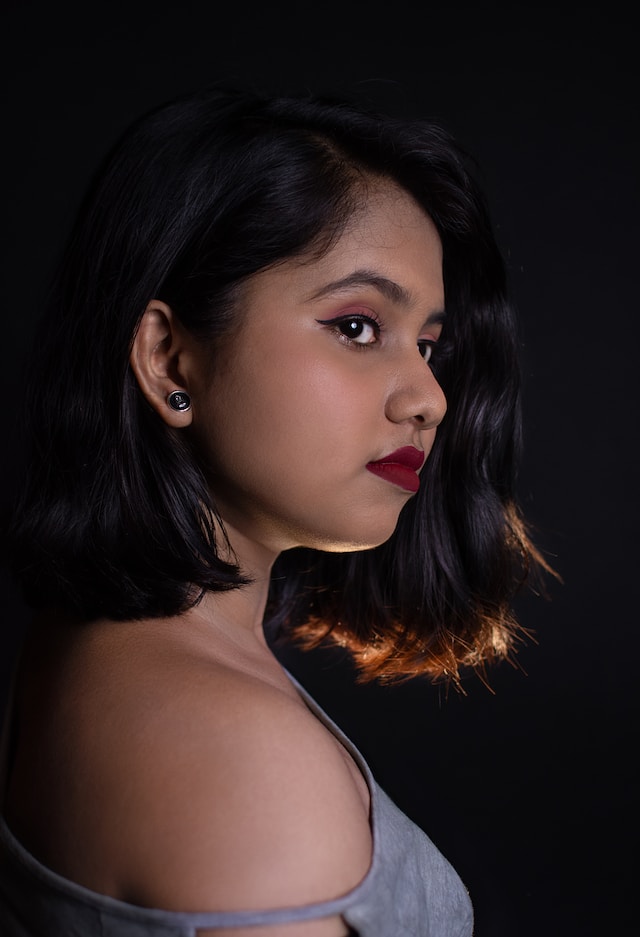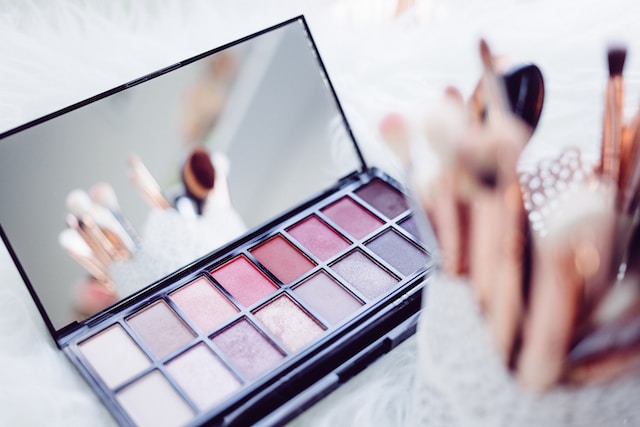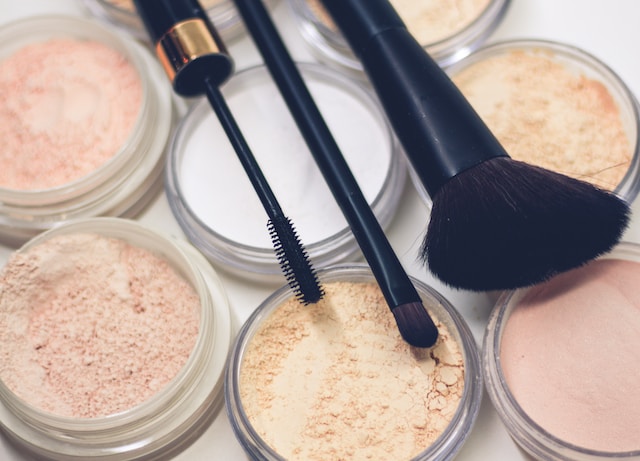Contents
- 1 Tips for Choosing the Right Foundation Shade
- 2 Applying Foundation for a Natural Look
- 3 Enhancing Your Eyes with Eyeshadow Techniques
- 4 Achieving Flawless Base Makeup with Concealer
- 5 Contouring and Highlighting for a Sculpted Face
- 6 Creating the Perfect Winged Eyeliner
- 7 Achieving Long-lasting Lip Color
- 8 Tips for Applying Blush for a Healthy Glow
- 9 Mastering the Art of Eyebrow Shaping
- 10 Setting Your Makeup for All-day Wear
Tips for Choosing the Right Foundation Shade
When it comes to choosing the right foundation shade, it’s important to consider your skin undertone. Skin undertones can be categorized into cool, warm, or neutral. Determining your undertone will help you select a foundation shade that complements your natural complexion. One way to identify your undertone is by looking at the veins on your wrist. If your veins appear more blue or purple, you likely have a cool undertone. If they appear green, you likely have a warm undertone. And if you have difficulty determining the color of your veins, you may have a neutral undertone.
Another factor to consider when selecting foundation is your skin’s surface shade. This refers to the overall color of your skin, independent of undertones. It’s crucial to choose a shade that closely matches your natural skin tone to achieve a seamless look. Testing foundation shades on your jawline or the side of your face can help you compare different options and find the best match. Remember, the right foundation shade should blend in smoothly with your skin, offering coverage without appearing too light or too dark.
• Consider your skin undertone: cool, warm, or neutral
• Look at the veins on your wrist to determine undertone
– Blue or purple veins indicate a cool undertone
– Green veins indicate a warm undertone
– Difficulty determining vein color may suggest a neutral undertone
• Take into account your skin’s surface shade, independent of undertones
• Test foundation shades on your jawline or side of face for comparison
• Choose a shade that closely matches your natural skin tone
• The right foundation shade should blend smoothly with your skin
Applying Foundation for a Natural Look
For a natural and flawless complexion, proper application of foundation is key. Start by choosing a shade that matches your skin tone closely. Avoid going too light or too dark, as this can make your makeup look unnatural. Test the foundation on your jawline or the back of your hand to see if it blends seamlessly with your skin.
Once you have the right shade, apply a thin layer of foundation using a brush, sponge, or your fingertips. Start in the center of your face and blend outwards, focusing on areas that need more coverage. Be sure to blend well along the jawline and hairline to avoid any visible lines. Use a light hand and build up the coverage gradually, allowing your natural skin to show through. This will give you a more radiant and natural-looking finish.
• Choose a foundation shade that closely matches your skin tone
• Test the foundation on your jawline or hand to ensure seamless blending
• Apply a thin layer of foundation using a brush, sponge, or fingertips
• Start in the center of your face and blend outwards for even coverage
• Focus on areas that need more coverage while keeping it light and natural-looking
• Blend well along the jawline and hairline to avoid visible lines
• Gradually build up coverage to allow your natural skin to show through
• This will give you a radiant and natural-looking finish
Enhancing Your Eyes with Eyeshadow Techniques
Eyeshadow is a versatile tool that can be used to enhance and define the eyes. With the right techniques, you can achieve a variety of eye-catching looks. One popular method is the classic smoky eye, which adds depth and drama to the eyes. To create this sultry look, start by applying a neutral shade to the entire eyelid. Then, using a darker shade, gently blend it into the crease and outer corner of the eye. Finally, apply a shimmery highlight shade to the inner corner and brow bone for an added pop of brightness.
Another technique that can make your eyes stand out is the gradient effect. This involves using eyeshadows of different tones to create a seamless transition from light to dark. Begin by applying a light shade all over the lid, then gradually build up the intensity by blending a medium shade into the crease. For added dimension, use a darker shade on the outer corner of the eye. By carefully blending and layering the shadows, you can achieve a glamorous and sophisticated look that will make your eyes truly mesmerizing.
Overall, mastering the art of eyeshadow techniques is all about practice and experimentation. With the right tools and a little patience, you can enhance your eyes and create beautiful eye makeup looks that complement your unique features. Whether you prefer a smoky eye for a night out or a gradient effect for a daytime look, eyeshadow can be a powerful tool in transforming your overall makeup game. So go ahead and have fun exploring different techniques to bring out the natural beauty of your eyes.
• Eyeshadow is a versatile tool that enhances and defines the eyes.
• The classic smoky eye technique adds depth and drama to the eyes.
– Apply a neutral shade to the entire eyelid.
– Blend a darker shade into the crease and outer corner of the eye.
– Add a shimmery highlight shade to the inner corner and brow bone for brightness.
• The gradient effect creates a seamless transition from light to dark on the eyelids.
– Apply a light shade all over the lid.
– Gradually build up intensity by blending in a medium shade into the crease.
– Use a darker shade on the outer corner for added dimension.
• Mastering eyeshadow techniques requires practice and experimentation.
• With patience, you can create beautiful eye makeup looks that complement your features.
• Eyeshadow can transform your overall makeup game, whether it’s for day or night looks.
Achieving Flawless Base Makeup with Concealer
Concealer is one of the essential tools in achieving a flawless base makeup look. It is a multitasking product that helps to hide imperfections, correct discoloration, and brighten the under-eye area. When choosing a concealer, it is important to select a shade that matches your skin tone. Going for a shade that is too light or too dark can result in an unnatural appearance. Apply a small amount of concealer onto the areas that need coverage and gently blend it in with a brush or your fingertips for a seamless finish.
To get the most out of your concealer, it’s important to use it in the right order. After cleansing and moisturizing your face, apply foundation first to even out your skin tone. Then, use a concealer to target specific areas that need more coverage, such as blemishes, dark spots, or under-eye circles. Pat the concealer onto the desired areas using a gentle tapping motion, and blend it outwards for a seamless transition with the foundation. Building up the coverage gradually will help to achieve a natural and flawless base makeup look that lasts all day. Remember, less is more when it comes to concealer, so start with a small amount and add more only if needed.
• Choose a concealer shade that matches your skin tone for a natural appearance
• Apply a small amount of concealer onto areas that need coverage
• Gently blend the concealer in with a brush or fingertips for a seamless finish
• Use concealer after applying foundation to target specific areas that need more coverage
• Pat the concealer onto blemishes, dark spots, or under-eye circles using a gentle tapping motion
• Blend the concealer outwards for a seamless transition with the foundation
• Gradually build up coverage for a natural and flawless base makeup look
• Remember, less is more when it comes to concealer – start with a small amount and add more if needed.
Contouring and Highlighting for a Sculpted Face
Contouring and highlighting are essential techniques for achieving a sculpted face. Contouring involves creating shadows on the areas of the face where you want to create depth, while highlighting adds light and emphasizes the areas you want to bring forward. To contour your face, use a shade that is two shades darker than your natural skin tone and apply it to the hollows of your cheeks, temples, and along the jawline. Blend it well to create a seamless effect. For highlighting, choose a shade that is two shades lighter than your skin tone and apply it to the high points of your face, such as the cheekbones, bridge of the nose, and cupid’s bow. This will give your face dimension and create a more defined look.
To achieve a natural-looking sculpted face, be sure to blend both the contour and highlight thoroughly. Harsh lines or uneven blending can make the makeup look harsh and unnatural. Use a fluffy brush or a damp beauty sponge to blend the products into the skin for a seamless finish. Remember, less is more when it comes to contouring and highlighting; start with a small amount of product and build it up gradually until you achieve your desired look. With practice and patience, you’ll be able to master this technique and create a beautifully sculpted face that enhances your natural features.
• Contouring involves creating shadows on the areas of the face where you want to create depth.
• Highlighting adds light and emphasizes the areas you want to bring forward.
• Use a shade that is two shades darker than your natural skin tone for contouring.
• Apply contour shade to hollows of cheeks, temples, and along jawline.
• Blend well for a seamless effect.
• Choose a shade that is two shades lighter than your skin tone for highlighting.
• Apply highlighter to cheekbones, bridge of nose, and cupid’s bow.
• This will give your face dimension and create a more defined look.
To achieve a natural-looking sculpted face:
– Blend both the contour and highlight thoroughly
– Harsh lines or uneven blending can make makeup look harsh and unnatural
– Use a fluffy brush or damp beauty sponge for seamless finish
– Start with small amount of product and build up gradually
– Less is more when it comes to contouring and highlighting
With practice and patience:
– You’ll be able to master this technique
– Create beautifully sculpted face that enhances your natural features
Creating the Perfect Winged Eyeliner
To achieve the perfect winged eyeliner, precision and patience are key. Start by mapping out the shape of your wing using small dots or dashes along the upper lash line. Then, connect the dots or dashes using short, smooth strokes to create a sleek and sharp wing. If you make a mistake, don’t panic! Simply dip a cotton swab in makeup remover and gently correct any errors. Practice makes perfect, so keep experimenting with different angles and thickness until you achieve the desired effect. Remember, practice and patience are your allies in mastering the art of the perfect winged eyeliner.
Once you’ve mastered the technique, it’s time to explore different styles and variations. For a subtle and natural look, opt for a thin and slightly upwards flick. To make a bold statement, try a thicker wing that extends outwards for a dramatic effect. You can also experiment with different eyeliner formulas, such as liquid, gel, or felt-tip, to find the one that works best for you. Whether you’re channeling retro vibes or enhancing your everyday makeup, the perfect winged eyeliner is sure to add a touch of glamour to any look.
• Start by mapping out the shape of your wing using small dots or dashes along the upper lash line
• Connect the dots or dashes using short, smooth strokes to create a sleek and sharp wing
• Use a cotton swab dipped in makeup remover to gently correct any mistakes
• Practice different angles and thicknesses until you achieve the desired effect
• Be patient and keep experimenting with different styles and variations once you’ve mastered the technique
• For a subtle look, opt for a thin and slightly upwards flick
• For a bold statement, try a thicker wing that extends outwards for a dramatic effect
• Experiment with different eyeliner formulas like liquid, gel, or felt-tip to find what works best for you
• Winged eyeliner adds glamour to any look whether it’s retro vibes or enhancing everyday makeup
Achieving Long-lasting Lip Color
For long-lasting lip color that stays put throughout the day, there are a few tricks you can try. First, prep your lips by exfoliating them gently with a lip scrub to remove any dry, flaky skin. This will create a smooth surface for your lipstick to adhere to. Next, apply a lip balm or moisturizer to keep your lips hydrated. Allow the product to sink in for a few minutes before proceeding.
Next, choose a lip liner that matches your lipstick shade or is slightly darker. Line your lips with the lip liner, focusing on defining the shape and filling in any gaps. This will create a base for your lipstick and prevent it from feathering or bleeding. Once your lips are lined, carefully apply your chosen lipstick using a lip brush or directly from the bullet. Blot your lips with a tissue, and then apply a second coat for intense, long-lasting color. Finally, to lock in your lip color, lightly dust your lips with a translucent powder or apply a thin layer of lip sealer. This will help the lipstick to set and stay in place for hours.
• Gently exfoliate your lips with a lip scrub to remove dry, flaky skin
• Apply a lip balm or moisturizer to keep your lips hydrated
• Choose a lip liner that matches your lipstick shade or is slightly darker and line your lips
• Fill in any gaps with the lip liner to create a base for your lipstick
• Carefully apply your chosen lipstick using a lip brush or directly from the bullet
• Blot your lips with a tissue to remove excess product
• Apply a second coat of lipstick for intense, long-lasting color
• Lightly dust translucent powder on your lips or apply lip sealer to lock in the color
• This will help set the lipstick and prevent it from feathering or bleeding
Tips for Applying Blush for a Healthy Glow
To achieve a healthy and natural-looking glow, applying blush is an essential step in your makeup routine. The key to getting it right is all about finding the right shade and applying it in the right way. When choosing a blush shade, consider your skin tone and undertone. If you have fair skin, opt for shades like soft pinks or peaches. For medium or olive skin tones, warm coral or rosy hues can enhance your complexion. Deep skin tones look beautiful with rich berry or plum shades that add a pop of color. Remember to test the shade on your cheeks before purchasing to ensure it complements your skin tone.
Once you have chosen the perfect blush shade, it’s time to apply it for a healthy glow that looks natural. Start by smiling to identify the apples of your cheeks, then gently sweep the blush onto the apples in an upward motion towards your temples. This technique gives a subtle flush and contours your face. Be careful not to apply too much blush at once; it’s always better to start with a light hand and build up the intensity as desired. Remember to blend the blush well to avoid any harsh lines and create a seamless transition. A fluffy brush or a slightly dampened beauty sponge can help achieve a soft, blended look.
• Choose a blush shade that complements your skin tone and undertone
• Fair skin tones: opt for soft pinks or peaches
• Medium or olive skin tones: try warm coral or rosy hues
• Deep skin tones: go for rich berry or plum shades
• Test the shade on your cheeks before purchasing to ensure it suits you
• Smile to identify the apples of your cheeks
• Gently sweep the blush onto the apples in an upward motion towards your temples
• This technique gives a subtle flush and contours your face
• Start with a light hand and build up intensity as desired, avoiding applying too much at once
• Blend well to avoid harsh lines and create a seamless transition between blush and skin
• Use a fluffy brush or slightly dampened beauty sponge for a soft, blended look.
Mastering the Art of Eyebrow Shaping
Eyebrows play a significant role in enhancing our facial features and achieving a polished look. Perfectly shaped eyebrows can frame the face and make a big difference in our overall appearance. To master the art of eyebrow shaping, there are a few key steps to follow.
First, determine the natural shape of your eyebrows. This will help you figure out the best way to shape them. Use a spoolie brush to comb your eyebrows in an upward direction, and then observe their natural arch and thickness. Remember, it’s important to work with your natural shape rather than drastically changing it.
• Use a spoolie brush to comb your eyebrows upward and observe their natural shape, arch, and thickness.
• Work with your natural shape instead of drastically changing it.
Next, identify the areas that need shaping. Look for any stray hairs or areas where you want to create more definition. This can include trimming long hairs or plucking stray ones. Use a pair of sharp eyebrow scissors to carefully trim any excess length and create a clean line.
• Identify areas that need shaping such as stray hairs or lack of definition.
• Trim excess length using sharp eyebrow scissors for a clean line.
Once you have identified the areas that need shaping, start by outlining the desired shape using an eyebrow pencil or powder in a shade close to your hair color. This will serve as a guide when removing unwanted hair. Be sure to follow the natural arch of your brows and avoid over-plucking.
• Outline the desired shape using an eyebrow pencil or powder in a similar shade to your hair color.
• Follow the natural arch of your brows and avoid over-plucking while removing unwanted hair.
To remove unwanted hair, use tweezers with slanted tips for precision. Start by plucking one hair at a time in the direction of growth to minimize pain and ensure accuracy. Take breaks between plucks to assess progress and prevent over-tweezing.
• Use tweezers with slanted tips for precise removal of unwanted hair.
• Pluck one hair at a time in the direction of growth for minimal pain and accurate results.
• Take breaks between plucks to assess progress and avoid excessive tweezing.
After shaping your eyebrows, fill them in using an eyebrow product like pencils, powders, or gels. Choose a shade that matches your brow color closely for natural-looking results. Fill sparse areas gently with light strokes following the direction of hair growth until achieving desired fullness.
• Fill in shaped eyebrows with an appropriate brow product such as pencils, powders, or gels.
• Choose a shade that closely matches your brow color for natural-looking results.
• Gently fill sparse areas with light strokes following the direction of hair growth.
Lastly, set your eyebrows in place using a clear or tinted eyebrow gel. This will help keep them in shape throughout the day and add definition to your overall look. Brush the gel through your brows in an upward motion to ensure all hairs are coated.
• Set your eyebrows in place with a clear or tinted eyebrow gel for long-lasting shape and definition.
• Brush the gel through your brows in an upward motion to coat all hairs evenly.
By following these steps, you can master the art of eyebrow shaping and achieve perfectly groomed eyebrows that enhance your facial features. Remember to work with your natural shape, take breaks while plucking, and fill in any sparse areas gently for a polished finished look. With practice and patience, you’ll be able to create beautifully shaped eyebrows on your own.
Setting Your Makeup for All-day Wear
To ensure your makeup lasts all day, setting it with a long-lasting powder or setting spray is essential. After applying your foundation, concealer, and any other face makeup products, lightly dust a translucent powder over your entire face using a fluffy brush. This will help to set the foundation in place and minimize shine throughout the day. Alternatively, you can also spritz a setting spray all over your face for a more natural finish. Setting sprays not only lock your makeup in place but can also help melt the products together for a more seamless look.
When it comes to setting your eye makeup, using an eyeshadow primer is key. This will create a smooth canvas for your eyeshadow and prevent it from creasing or smudging throughout the day. Apply a small amount of primer onto your eyelids and blend it out with your fingertips. Once your eyeshadow is applied, gently press a thin layer of translucent powder over the top to set it in place. This will not only prevent the eyeshadow from smudging but also intensify its pigmentation. Remember, setting your makeup will not only make it last longer but also ensure that it remains flawless and fresh-looking all day.
• Lightly dust a translucent powder over your entire face using a fluffy brush after applying foundation and concealer
• This helps set the foundation in place and minimize shine throughout the day
• Alternatively, spritz a setting spray all over your face for a more natural finish
• Setting sprays lock makeup in place and help melt products together for a seamless look
• Use an eyeshadow primer to create a smooth canvas for your eyeshadow
• Apply a small amount of primer onto your eyelids and blend it out with fingertips
• Gently press a thin layer of translucent powder over the top of eyeshadow to set it in place
• This prevents smudging and intensifies pigmentation
• Setting makeup ensures it lasts longer and remains flawless and fresh-looking all day




